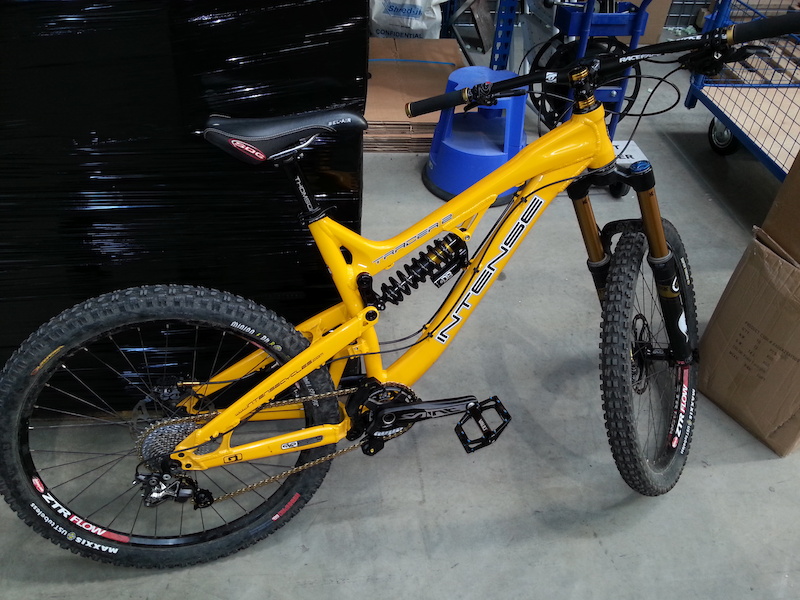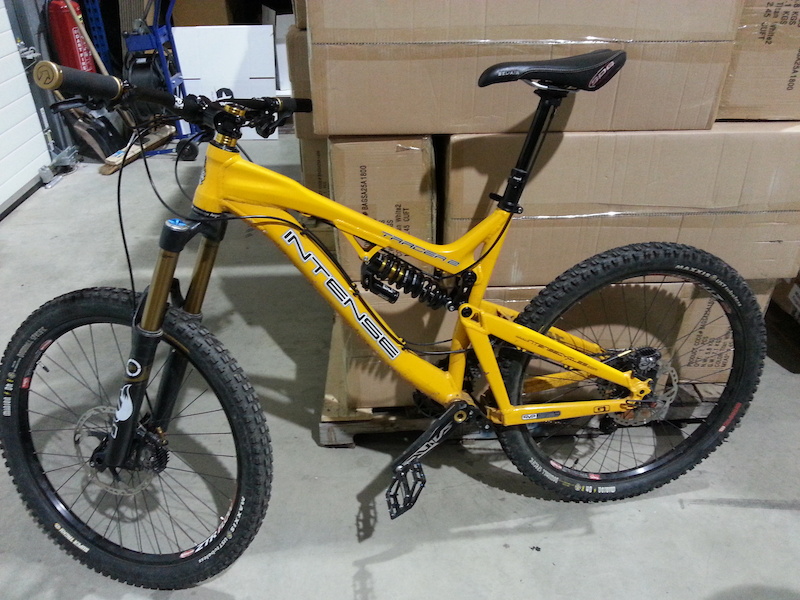- This topic has 5 replies, 4 voices, and was last updated 11 years ago by GSuperstar.
-
VPP Suspension (Tracer 2)… Air or coil?
-
GSuperstarFree MemberPosted 11 years ago
So I was reading up on how some suspension systems work better with an air shock over a coil,(progressive eyc) and vice versa.
I’m currently running a CCDB on my Tracer2, but wondering if the VPP is aimed more at having an air shock instead?
ThanksaPFree MemberPosted 11 years agoI’d have thought that setting up VPP suspension for initial sag would be much harder with a coil shock than with an air shock. It might take an hour or so with different springs getting the correct sag into the VPP axle path.
Don’t know if you’d be using a platform shock as well but I much preferred the action of my classic Blur with non platform to that of the Spider FRO with platform that I replaced it with.geetee1972Free MemberPosted 11 years agoI’m not sure if this is absolutely correct but….
If a frame is designed around an air shock, it means that the rate of progressiveness within the frame mechanics will be tuned to work with an inherently rising rate of the air spring, i.e. it will not be as mechanically progressive as say a DH bike designed to work with a coil because the air spring is already making it harder to compress as you move through the stroke.
This is all about the amount of leverage the suspension arm is creating and therefore the amount of compressive force the shock is ‘seeing’. Progressive means it gets harder to compress, which is what most people want, but it’s the rate of progression that is key here.
Coil springs are linear in the force needed to compress them at all points in their cycle, so frames designed around coils have more progression built into the kinematics to make it harder to compress the shock deep in the travel. The leverage ratio falls, the force the shock sees decreases, it gets harder to compress.
If you frame is designed specifically for an air can, then with a coil, you may be bottoming out too easily, because the rate of progression will be assuming the shock is getting harder to compress at the end than is actually happening.
But since you’re running a CCDB, that is easily fixed, you just need to add more high speed compression damping.
The Orange Five is, I think, inherently regressive in its design, i.e. at the end of the stroke it’s actually getting easier to compress (more mechanical leverage) which is one of the reasons why the CCDB works so well on that frame as the HSC can be tuned to make it nicely progressive.
matlockmeatFree MemberPosted 11 years agoGot any pics you can post up of your Tracer 2? Might give me a few ideas for my build.
Currently struggling to decide what forks and drive train setup to go with.I currently have one on order. It’s supposed to be here any day now and the suspense is killing me.
GSuperstarFree MemberPosted 11 years agoThanks geetee, I’ll have a few more reads through that. If my CCDB is fine then I guess I’ll have a better play with it. It’s one of those, if it’s not going to benefit the weight saving is so minimal it’ll be pointless.
matlockmeat:-
Right Side (Before Reverb)
Left Side (After Reverb)
Intense Tracer 2 Can Am Yellow 2012 Medium
Cane Creek Double Barrel
Fox Van 160mm 2012 Kashima Coated
Hope ProII Evo with Stans ZTR Flow Rims
Shimano Saint M820 Chainset
Shimano Saint M820 Brakes
Shimano Saint M820 Rear Derailleur
Shimano Saint M820 Shifter
Shimano Saint Cassette
Hope 34T Chainring E13 LG1+ Guide
Rock Shox Reverb Seatpost
Thomson DH 780mm Bars
Thomson Elite X4 Stem
Thomson Seat Clamp
Hope Headset
KMC SL 10 Gold Chain
Specialized Butcher 2.3 2Bliss Tyres
DMR VaultsNow fitted with Thomson bars also which I highly recommend, and Specialized Butcher 2Bliss 2.3 tyres, again stupidly better for my riding over the Minions. Let me know if you have any questions on build choice 😀
The topic ‘VPP Suspension (Tracer 2)… Air or coil?’ is closed to new replies.


